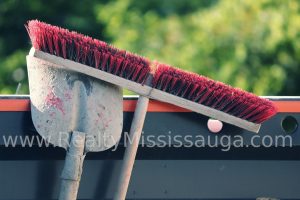Property Makeover Business in Mississauga: Starting a property makeover business is a great way to get your feet wet as an entrepreneur in Mississauga. There is significantly less barrier to entry as you can easily start as a one-person operation and the cost of starting is low.
Renewal workers must demonstrate decision making, job work planning, and organizing, numeracy, project management, problem-solving, and working with others.
Program outline
Computer Fundamental and Internet
Use the Internet for training, documents, and basic computer skills.
Microsoft Word, Excel, PowerPoint
Introduces word processing, spreadsheets, PowerPoint presentations.
Microsoft Outlook
Explains the basic and advanced features of Outlook.
Professional Skills – Train on interpersonal skills necessary for successful induction and work in the professional world.
Foundations
Choosing the right foundation, either concrete or wood, and in the concepts and process of making a foundation. Students are introduced to the equipment required for foundation construction.
They learn about minor repairs and upgrades of foundations, as well as how to replace shallow foundations. Students also learn about the moist folding solution.
Blueprints and Building Codes
Reading architecture and blueprints from one’s point of view to find and understand important information on blueprints, which will require undeveloped skills for construction and renovation.
Students learn about sheet size, tile blocks, and borders, as well as the importance of letters, abbreviations, and symbols on architectural drawings. Students also learn about architectural scales and marking, as well as appropriate techniques for turning and storing blueprints.
AutoCAD Level 1
Basics of AutoCAD so that students can use it as it relates to renovation and construction. Students learn to switch between model space and paper space with classic and drafting and annotation workspaces.
Students will learn to work with basic draw commands by adding layers, text and text styles, colors, line types, and line weights. Students will learn to set a basic layout with a properly scaled approach and plot the layout accordingly.
Tools and shop tools
Learn to use and maintain hand tools such as hands, hammers, slaughterhouses (sandpaper, wrappers), channeling tools (nail pullers, breaking bars), and chisels. The next students learn about portable power tools such as punches and nail guns, disgusting devices (grinders and sanders), planning equipment, and routers.
Students learn about stationary electrical equipment such as table saws, chop saws, material saws, drilling, and boring equipment. Students also learn about explosive active devices, as well as how to select, clean, and maintain all devices in the course.
Project management for construction management is particularly concerned with construction and renovation for project management.
Students learn about building a project plan and project management process. They learn how to budget and evaluate to keep them within the triple constraints of the project. Students learn about the various stakeholders, leadership, and effectiveness of a project.
Framing and Rough Carpentry
Learn the difference between wood and metal frames and their features, pros, and cons. They learn to select the appropriate framing wood or material, and how to use framing tools such as nail guns with safety.
Students learn to calculate and cut the angles of wooden planks and metal frames. Students also learn how staircases and rafters are designed, making layouts.
Finished Carpentry
Learn about measuring and layout in addition to cutting, shaping, sanding, sailing, and drilling. Students find the necessary materials and learn basic skills to do carpentry at work. They additionally learn about door and window coverings, as well as baseboard and crown molding.
Drywall and painting
Drywall, various tools and types, and materials required. Students learn how to dry on plaster, how to tape, and how to properly coat three coats with sanding. Students are aware of soundproofing, the selection of paint, and all the supplies and equipment needed to paint properly.
Ceiling System
Introduces students to the different types of roofing that are used for renovation and construction. Students learn how to use leveling and laser levels, and how to install roof boxes and fixtures.
Students also learn about issues with sealing systems, including weight concerns for code making and safety, dealing with rot, and insect infections. Students also learn how to cut holes for fixtures, and how to prepare, paint and finish ceilings for a professional look.
Flooring
Learn different types of flooring including hardwood, laminate, ceramic, and carpet. Students learn to choose the appropriate equipment and prepare the floor surface. They further learn the skill of laying a floor which includes design options, horizontal, vertical, diagonal, and even custom designs.
Introduction to Electrical
Introduction to the Canadian Electrical Code and Municipal Code, and students learn what they can and cannot do without a licensed electrician. They learn the theory of electricity, voltage and AC / DC currents, electrical factors, and electrical hazards.
Students learn to install an electrical installation, install a switch, calculate, measure and operate a line of electrical wire. He also learned about fuses and breakers.
Introduction to plumbing
An entrance to plumbing codes and students learn what they can and cannot do without an authorized plumber. They learn the theory of plumbing, water factors, and water hazards.
Students learn to install copper pipes, work with ABS, test drains and install, repair, and make domestic, commercial, and industrial fixtures. Students also learned to measure, cut, bend and fabricate thread pipes as well as connect to pipes using a clamp, cement, and soldering. Students do not become “licensed plumbers”.
Introduction to HVAC
Introduction to heating, ventilation, and air conditioning, commonly known as HVAC. HVAC should be considered as part of any construction plan, so students learn the basics about HVAC systems that control ambient conditions, including temperature, humidity, airflow, and air filtering. Students are taught about the equipment, materials, testing equipment, and service equipment required for HVAC basics.
Building a house
This course provides students with a hands-on learning experience for building the internal structure of a multi-room house.
Depending on the number of students in the class, students will construct the interior of a house with 2, 3, or 4 rooms. All theoretical training from the first four months of the program is applied at every level as students build a house using input from their blueprint design, ranging from conception to cost, materials procurement, layout to construction, flooring, and roofing. System included. , To trim, painting and finish.
Know the complete information about Property Makeover Business in Mississauga.




